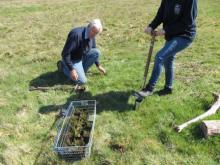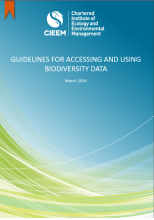Please note Essex Wildlife Trust ceased to operate a Biological Records Centre and no longer offer commercial biological data services to consultants and others.
Essex Wildlife Trust would like to take this opportunity to thank you for your business and support over the past years.
Essex Wildlife Trust recognises that the county needs a fully functional Local Environmental Records Centre (LERC) which meets all our needs, is fully functional in the policy and decision-making arenas and supports and celebrates biological recording and the recording community. Environmental data has a critical role to play in the planning and decision-making processes.
Essex needs a LERC which fulfills current needs and can evolve to meet the challenges in the emerging policy environment we face. We wish to collaborate with all partners in seeking a solution to a problem which we are committed to help resolve and we offer our resources and goodwill.
Mark Iley, Landscape Conservation Development Manager
marki@essexwt.org.uk
Where to access data going forwards:
There is no one source of protected species information in Essex, and all available sources of data should be consulted to obtain a comprehensive dataset for your area.
Essex Field Club (EFC) offer an Essex Biological and Geological Records Centre Service to help you undertake ecological desk studies and obtain specialist species reports which can be accessed here.
Basic Local Wildlife Sites descriptions for Essex could be obtained here. Please contact the relevant Local Authority for more information on Local Wildlife Sites in your area of interest.
Please contact Place Services at Essex County Council for information on Special Roadside Verges in Essex.
Additional sources of records are listed on this page.
Note regarding the records submission function of this website:
This website will continue to work but may not be maintained - please do check back for any future updates.
All previously submitted records and any new records submitted to this website will be shared with iRecord. Please mark any records that you would not like to be shared at full resolution with iRecord as Sensitive and choose the appropriate resolution for blurring. Please delete any records that you would not like to be shared with iRecord. You can do so by going to My Records and selecting the "Edit this Record" button for the record of interest.
If you would like to use iRecord going forwards, you can retain access to your pre-existing records by registering on iRecord using the same email address as you have used to register on this website. The iRecord registration page can be found here
Please don't hestitate to get in touch at records@essexwt.org.uk with any queries you may have.






